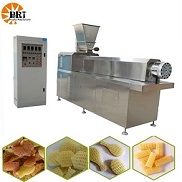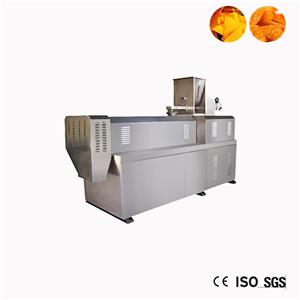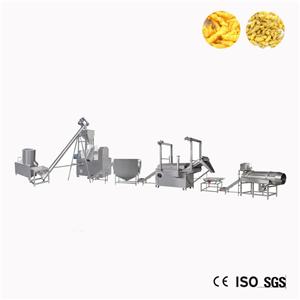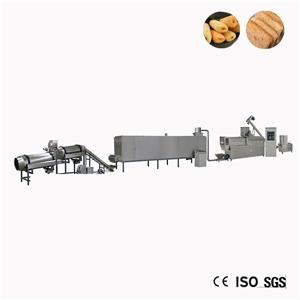Moisture control in production process
Moisture control in production process
The moisture content of pellet feed is a very important quality index, which directly affects the quality of pellet feed and the economic benefits of feed enterprises. Effective control is one of the key technologies to ensure the quality and safety of feed products.
The moisture content of pellet feed is a very important quality index, which directly affects the quality of pellet feed and the economic benefits of feed enterprises. Effective control is one of the key technologies to ensure the quality and safety of feed products. If the moisture content exceeds the specified standard, the pellet feed is easy to go mouldy and deteriorate, which is not conducive to preservation, and the content of nutrients will be relatively reduced; However, if the moisture content of the product is too low, it will cause unnecessary losses to the enterprise, and the uneven moisture content will also cause the instability of product quality and affect the brand reputation of the product. In the process of feed processing, appropriate moisture content is conducive to granulation, reduce energy consumption and improve production. Therefore, in the production process of compound feed, in order to make the production more smoothly, lower energy consumption, smoother and more uniform particles, and the final product meets the specified moisture content standard, the moisture control in the whole production process must be carried out.
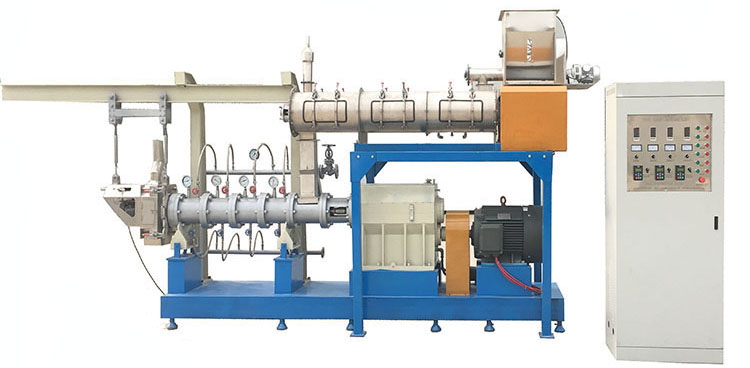
Moisture control is to comprehensively control various factors according to different situations in the whole process of production, so that the final moisture content of the product can reach the expected goal of the producer. The main factors affecting the final moisture content of feed products are: the moisture content of feed raw materials, the moisture change in the crushing stage, the amount of liquid added in the mixing stage, the moisture content of steam, the tempering level, the size and thickness of die holes of the die, the air volume and drying time of the cooler, the packaging quality management, and the influence of different climatic and environmental factors.

1、 Moisture control of feed materials
1. The key of moisture control in raw material receiving process is to accurately detect the moisture content in raw material samples
Sampling must represent the overall situation of the whole batch of raw materials. Samples shall be taken according to the sampling standards to prevent omission. At the same time, the moisture content of raw materials shall be visually detected during the sampling process. The accuracy of raw material moisture detection shall be ensured. In order to reduce the error, two or three parallel samples can be detected, and the average value shall be taken as the detection value.
2. Do a good job in the management and storage of water absorbent raw materials (rice bran, wheat bran, etc.)
The raw materials that are easy to absorb water do not need to be purchased at one time. At the same time, avoid stacking against the wall. Pay attention to warehouse management to prevent moisture from entering the warehouse in wet weather. The raw materials shall be imported according to the raw material consumption under normal production conditions, and the raw materials shall be delivered in accordance with the "first in first out" principle, so as to shorten the inventory period of raw materials as far as possible. After testing, the moisture loss of cottonseed and rapeseed meal with more than 10% moisture in storage is about 1% after six months of storage.
2、 Moisture control in crushing stage
Comminution technology is the key link in the process of feed product processing, and the loss of moisture in the comminution process can not be ignored. Through the comparative detection and analysis of the moisture content of the material before and after the crushing of the screen pieces of the crusher with different aperture, it is found that the moisture loss increases significantly with the reduction of the particle size of the material. Similarly, for the materials with different gradient moisture content, the comparative detection and analysis of the moisture content of the materials before and after crushing show that with the increase of the moisture content of the materials, the moisture loss of the pulverized materials increases, the maximum loss of moisture is close to 1%, the crushing efficiency is significantly reduced, and the energy consumption is significantly increased. After superfine grinding, the particle size of 98% of shrimp can exceed 80 mesh. At present, water drop hammer crusher is widely used for fish feed, and the particle size of the screen is 1.0-1.5mm. For the pulverizer equipped with negative pressure air suction and air door adjustment device, the air volume can be adjusted. Comparing the moisture loss of materials before and after crushing, it is found that the air volume has a significant impact on the production efficiency, while the moisture loss has no significant impact. However, with the increase of air volume, the moisture loss still has an increasing trend. After corn crushing, the water loss of mechanical transportation is 0.22%, and that of pneumatic transportation is 0.95%. Most shrimp materials are superfine crushed without net, and are transported by air suction. Most fish materials are mechanically transported by winch after crushing.
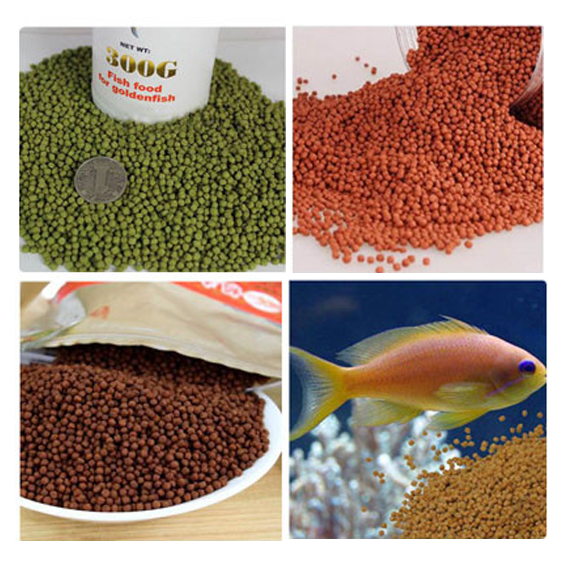
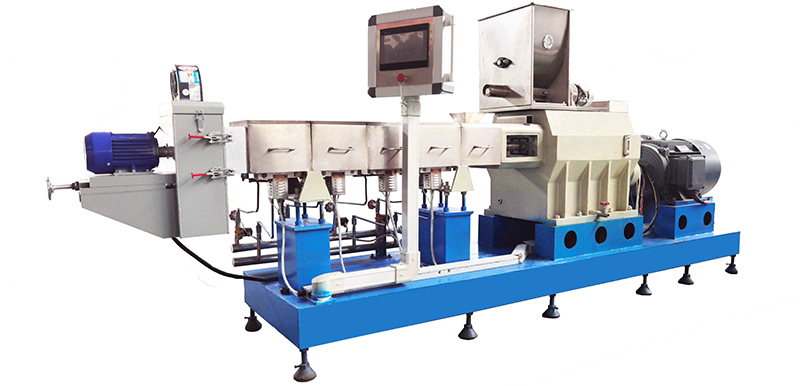
3、 Moisture control during mixing
When the moisture content of the mixed powder is much lower than 12.5%, spray atomized water during mixing can be considered. But at present, there are many problems in this area: no more than 2%; The water retention performance is poor, and only 40-50% water retention rate can be achieved when 2% water is added; It is best to use hot water to prevent mold; The consistency of mixing time and water addition time (spraying together) shall be considered; To ensure uniformity, adjust the position of the sprinkler and the size of the sprinkler; Need to add mold inhibitor; Pay attention to cleaning the inner wall of the mixer. Many factors limit the addition of water to the mixer, and the added free water will increase the potential moldy chance of the finished product.
4、 Moisture control during conditioning
Conditioning is one of the most important processes in the processing of feed products. Conditioning moisture, conditioning temperature and conditioning time are the key factors to control the final material conditioning effect. In the process of steam conditioning, water is the carrier of heat energy. The amount of conditioning water affects the conditioning temperature. The conditioning water is adjusted by controlling the amount of steam added, and the conditioning time determines the utilization rate of water and heat energy in the steam.
Through the analysis of the correlation of various factors in the tempering process, some of them can be adjusted to control some other factors. For example, the conditioning moisture can be controlled by adjusting the amount of steam added and the conditioning time. The conditioning time can be adjusted by changing the filling coefficient of materials in the conditioner. This change can increase or decrease the quenching and tempering water content by 0.5-1% under the condition of constant steam addition.
1. Under normal steam quality, the steam pressure of the boiler used in the feed plant is 6-9kg/cm2, and the production pressure is 3-4kg/cm2. The higher the pressure, the lower the steam water content; On the contrary, the lower the pressure is, the higher the humidity is, and the higher the steam moisture content is. If the gas distribution drum and steam supply pipe are installed effectively and reasonably, and the condensate in the steam transmission pipe can be completely removed, the steam entering the conditioner has a low moisture content. In the production process, it is necessary to make corresponding adjustment according to the actual situation so that the molded materials can reach the ideal moisture content. In the dry and hot seasons in summer and autumn or when the moisture content of the raw materials used in the formula is low, it is necessary to find ways to increase the moisture content of the materials. In this case, as long as the production needs are met, the lower the pressure, the better. The boiler steam supply pressure can be adjusted to 3-5kg/cm2, and the production use pressure can be adjusted to 2kg/cm2. Close all or part of the steam traps to increase the moisture content of the steam, so as to achieve the purpose of increasing the moisture content of the materials after conditioning. Due to the low moisture content of raw materials and steam, it is difficult for the moisture content of conditioned materials to reach 16% (shrimp is not easy to reach 14%), so closing the drain valve will not cause machine blockage.
2. Under normal conditioning time, the longer the material stays in the conditioner, the more fully it will be mixed with steam. The moisture absorbed from the steam will also increase correspondingly, and the higher the moisture content of the material. In the production process, if the moisture content of the material is low, it is necessary to absorb more moisture by increasing the conditioning time. To increase the tempering time, the effective length of the conditioner can be increased, the rotating speed of the conditioner can be reduced, and the blade angle of the conditioner can be adjusted. In addition, try to make the material full of the conditioner, which is also conducive to the material to absorb more water. However, we should not blindly pursue the improvement of the filling coefficient and ignore the main functions of the conditioner.
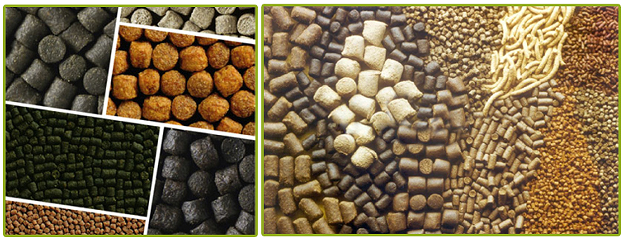
5、 Die hole size and thickness of die
1. The pore diameter of the die the pore diameter of the die is different, and the moisture content of the pellet feed product produced is also different. The diameter of feed particles produced by the die with small aperture is small, and the cooling air is easy to penetrate the particles, so the water taken away during cooling is more, and the water content of the product is lower. On the contrary, for the die with large aperture, the diameter of feed particles is larger, and the cold air is not easy to penetrate the particles, so the water taken away during cooling is less, and the water content of the product is higher.
2. The effective thickness of the pressing die. If the effective thickness of the pressing die is large, the friction resistance in the granulation process is large, the material is difficult to pass through the die hole, the friction temperature is high, the moisture loss is large, and the moisture content of the granular product is low. On the contrary, thinner dies have higher moisture content in their products.
6、 Moisture control of cooling link
Cooling is the last step to control product moisture in the process of processing. In this process, the first step is to ensure that the moisture content of the product does not exceed the product quality control index, and the second step is to control the product temperature within an appropriate range to ensure that the product will not be adversely affected by excessive temperature. At present, the counter flow cooler is mostly used, and the effect is very good. During cooling, the decrease of moisture is related to the decrease of temperature. Just as in the modulator, the increase of moisture is related to the increase of temperature. Generally, the moisture content of the material will increase (or decrease) by 0.6% for every 10 ℃ increase (or decrease) in temperature.
The purpose of cooling is to reduce the temperature of the pellet feed so that it does not exceed 3-5 ℃ of the room temperature, take away the moisture in the pellet, and make the moisture content of the pellet feed product meet the specified standards. The cooling air volume and cooling time shall be adjusted in time according to the output, temperature, moisture, particle size and composition of the pellet feed just demoulded or from the post curing equipment. The cooling air volume and cooling time for the dry and small pellet feed shall be smaller; On the contrary, the wetter and larger pellet feed should increase the air volume and extend the cooling time.
7、 Finished product management
Finished product management is also very important. The granulated (or post matured) feed particles can only be packaged after being fully cooled by the cooler. Generally, the temperature of the finished feed shall not be higher than 3 ℃ of the room temperature, and it can reach the standard only when it is touched by hands without a sense of warmth. After packaging, it is best to avoid the sun exposure, otherwise the residual moisture in the product will migrate to places with low packaging and storage and transportation temperature, so that the humidity in these places will be increased, and the feed products are prone to mildew.

8、 Effect of environmental temperature and humidity on moisture content of feed products
When the air temperature rises by 11.1 ℃, the system water power of the air can be doubled. Because of this air heating process, the pellet feed can be dried in the cooler even in high humidity weather. Hot particles make the air temperature rise, so that the air can take away more water. In summer, the moisture content of raw materials is low, and the moisture content of finished materials will be lower. Therefore, some processing parameters may have to be changed. Environmental humidity will slightly increase moisture content.

